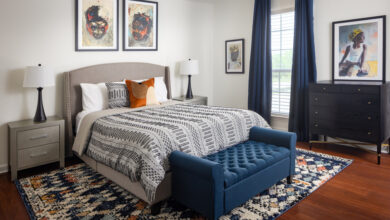American Society of Interior Designers Unveils Adaptive Living Resource Guide
In response to the needs of an aging population and the increasing demand for inclusive residential environments, the American Society of Interior Designers has released “Reimagining Aging: A New Way Forward for Adaptive Living in the Home.” The design guide empowers interior design professionals with an evidence-based framework that transforms how we think about home design — through the lenses of spatial equity, universal design and adaptive functionality.
Developed by ASID’s Universal Design Committee as a follow-up to the “Senior Living Resource Guide,” the new adaptive living resource addresses the critical need for design strategies that support independence, connection and well-being across the lifespan.
The guide introduces eight key principles that help designers create spaces that are not only functional and beautiful, but also deeply responsive to the needs of aging and diverse populations. The principles are:
- Design for autonomy, foster independence and reduce risks of injury.
- Design to alleviate isolation, employ design strategies that reduce physical isolation; isolation has been linked to mental decline and can lead to higher risks of dementia.
- Design to prioritize connectivity, use technology to facilitate engagement even when direct physical connection is not an option.
- Design to facilitate engagement, proactively support social engagement through varying means to avoid the impacts of isolation.
- Design to integrate wellness, develop a holistic approach to incorporate indoor and outdoor wellness in daily living.
- Design to elevate building systems, reduce the physical barriers to aging at home, and support environmental health and comfort.
- Design to emphasize attainability, use design tools to address financial barriers and the feasibility of aging-in-place.
- Design to lead stakeholder collaboration, establish an early dialogue with the community, trade partners and clients on the fundamental design strategies that support aging-in-place.
The guide also features real-life personas that reflect diverse household needs and challenges — offering personalized, modular solutions for key areas of the home such as kitchens, bathrooms, entries and living spaces. These vignettes bring the guide’s principles to life — demonstrating how adaptability and aesthetic excellence can coexist.


